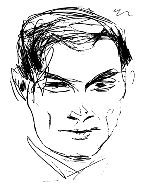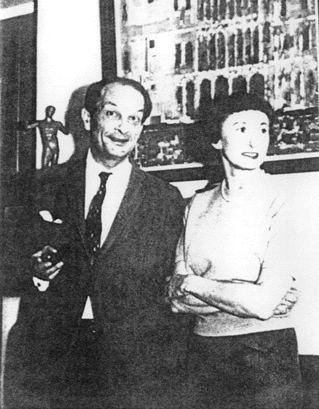 Born: 1909 Lwów, Poland
Born: 1909 Lwów, Poland
Stanislaw Ulam was one of the many great mathematicians to come from the
Polish school of mathematics. Born in the early 20th century in Lwów,
Poland, he was contemporaries with the likes of Banach, Kuratowski, and
Mazur.
Stan studied at the Lwów Polytechnic Institute, in the Department of General Studies (the quota had been reached in the Department of Electrical Engineering) beginning in the Autumn of 1927. In 1933, Stan was conferred the first Doctoral degree from the Department of General Studies at the Polytechnic Institute.
Following his studies, Stan travelled through Europe, and later crossed the Atlantic Ocean to the United States. In the U.S., he was a visting scholar at a number of institutions, including Princeton (where he met John von Neumann), Harvard, and the University Colorado. By the early 1940's, Stan had found a teaching position at the University of Wisconsin in Madison.
The outbreak of the second World War was to lead to a monumental change in Stan's life. Stan wanted to do something for the war effort in the U.S., and, through the help of von Neumann, was offered an opportunity somewhere west of the Mississippi. As exerpted from Stan's Adventures:
Johnny said that there was some very exciting work going on in which I could possibly be of good use; he still could not tell me where it was taking place, but he traveled rather often from Princeton to that location.Within the year, Stan would join the team of the world's leading physicists, chemists, and mathematcians working on the Los Alamos Project in Los Alamos, New Mexico. They were to design and build history's first atomic bomb.I don't know why -- by pure chance or one of these incredible coincidences or prophetic insights? -- but I answered jokingly, "Well, as you know, Johnny, I don't know much about engineering or experimental physics, in fact I don't even know how the toilet flusher works, except that it is a sort of autocatalytic effect." At this I saw him wince and his expression become quizzical. Only later did I discover that indeed the word autocatalytic was used in connection with schemes for the construction of an atomic bomb.
Stan's cheif contribution to the Project was in testing the theories and designs as the physicists (and mathematicians!) cranked them out. Instead of going up on a high Mesa each evening and pushing plutonium atoms together, Stan used mathematics to simulate the nuclear reaction which was to take place in the bomb. His method was to first find equations which governed the reaction, and then to analyze how these equations behaved.
Now, obviously, Stan could not have modeled each and every atom in the plutonium core. So he used statistics to help him. Stan would take random variables as input, compute the output from the equation, and repeat over and over. This would give him some set of results which he could analyze statistically. This method that Stan used would later be known as the Monte Carlo method.
In the early and mid 1940's, there were "computers" available for work on the Monte Carlo method in Los Alamos. Of course, these computers were simply humans which computed. In fact, Stan's wife Françoise was such a computer, one of about a dozen.
The Monte Carlo simulation of the Bomb was ideal work for computers. The world's first computer, the MANIAC, became functional during the several-month's work of the simulation at Los Alamos. In fact, the MANIAC was developed for use by the Los Alamos project in their simulation. Stan was a big supporter of computers and of their application to mathematical problems, both applied and theoretical. Later in life, Stan would be a big advocate for computers in the realm of Computatinoal Biology.
Stan was very much a humanistic fellow. He knew that the work on the atomic bomb, and later on the Super (hydrogen) Bomb would be of great importance. During his tenure at Los Alamos, he was quoted to have said, "It is still an unending source of surprise for me to see how a few scribbles on a blackboard or on a sheet of paper could change the course of human affairs".
By the late 1960's, Stan had left Los Alamos for a University position in Boulder at the University of Colorado. He remained at the University until his death in 1984.
 Here, we have Stan and Françoise Ulam in their home in Los Alamos.
Here, we have Stan and Françoise Ulam in their home in Los Alamos.